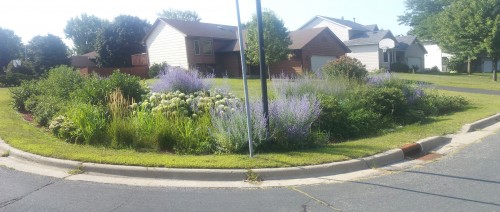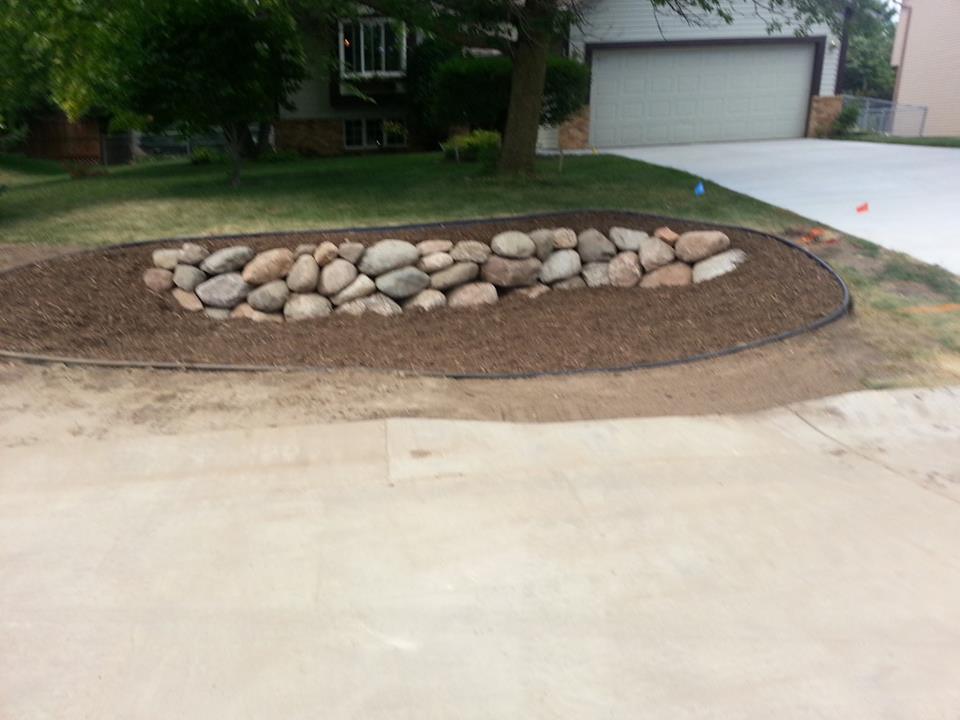The two-year rain garden project in Woodbury, which I wrote about in July, ends the construction phase this week when the last batch of plants is delivered to the homeowners who volunteered to turn their property over to an idea to clean up the waterways.
Now the really ugly part begins. Rain gardens take awhile to get going and, I learned via comments to the original post, neighbors tend not to like the looks of them. And why should they? They look like a gangly pre-teen.
That’s why a post today on the streets.mn blog by Samuel Geer, a landscape designer, is well worth checking out.
What do these things look like 10 or so years from now? Geer found out by visiting Burnsville, where the rain garden project is “the poster child for rain gardens and stormwater retrofits,” he writes.
Aside from the fact that they all seemed pretty well maintained, you could tell that there had been some professional refurbishment as well. The grassed inlets had been replaced somewhat recently error to prevent sedimentation of the garden basins and landscape edging or pavers served as an additional sediment trap and energy dissipation system.
Without this kind of protection, the fine particles carried in the runoff will rapidly plug up the basin, killing the plants and preventing infiltration. In addition, you could see that for the newer gardens, the curb cut inlet had been replaced with a sump catch basin that could be cleaned out by a Vactor Truck.
This move results in a more reliable maintenance regime than expecting the homeowner to regularly rake sediment out of the turf strip as it accumulates.
Well, swell. When the Woodbury garden construction was finished a couple of weeks ago, they rolled the sod near the inlets, apparently ignoring Burnsville’s teaching.
The Burnsville rain gardens are still thriving after almost a decade because they are functionally designed and we can intuitively recognize them as infrastructure. This visibility and care in engineering is the key to earning green infrastructure a real seat at the infrastructure table.
The water captured by these rain gardens is a drop in the bucket compared to the ecological services performed by say, an intact wetland or an agricultural buffer strip. However, they present a compelling vision for a green street with layered functions that people can appreciate and wrap their minds around.
So if the neighbors can be patient, maybe something like this in Woodbury…
… will end up looking like this in Burnsville:

But it’ll be a challenge. Samuel says the Burnsville rain gardens thrived because 80 percent of the residents built them. Otherwise, he says, they’ll be overburdened by sediment — sand, for example. In my neighborhood, very few rain gardens were built.
I’ll let you know in 10 years.

